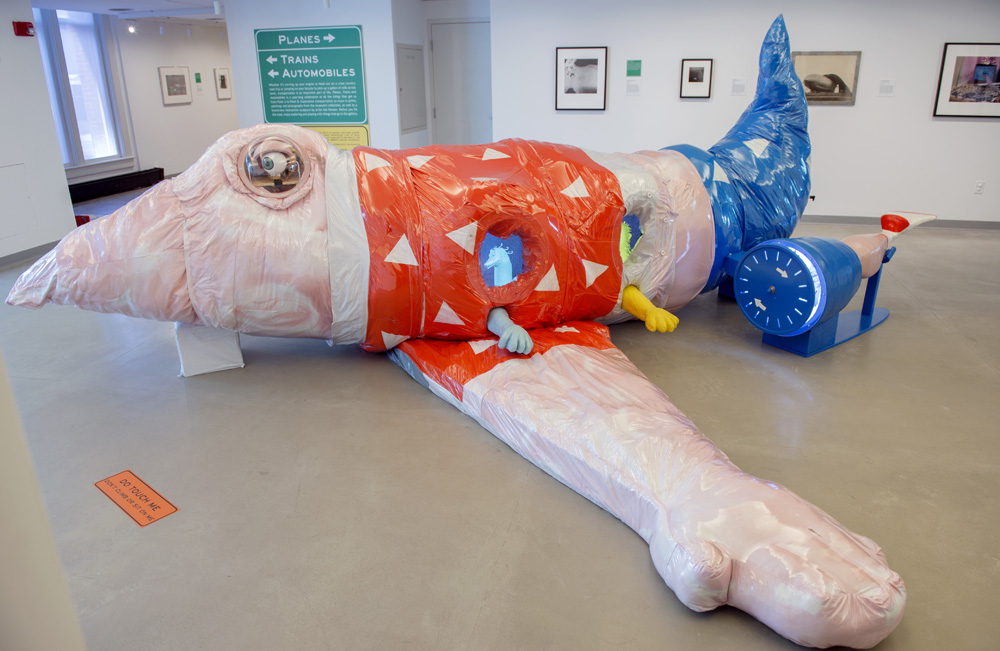
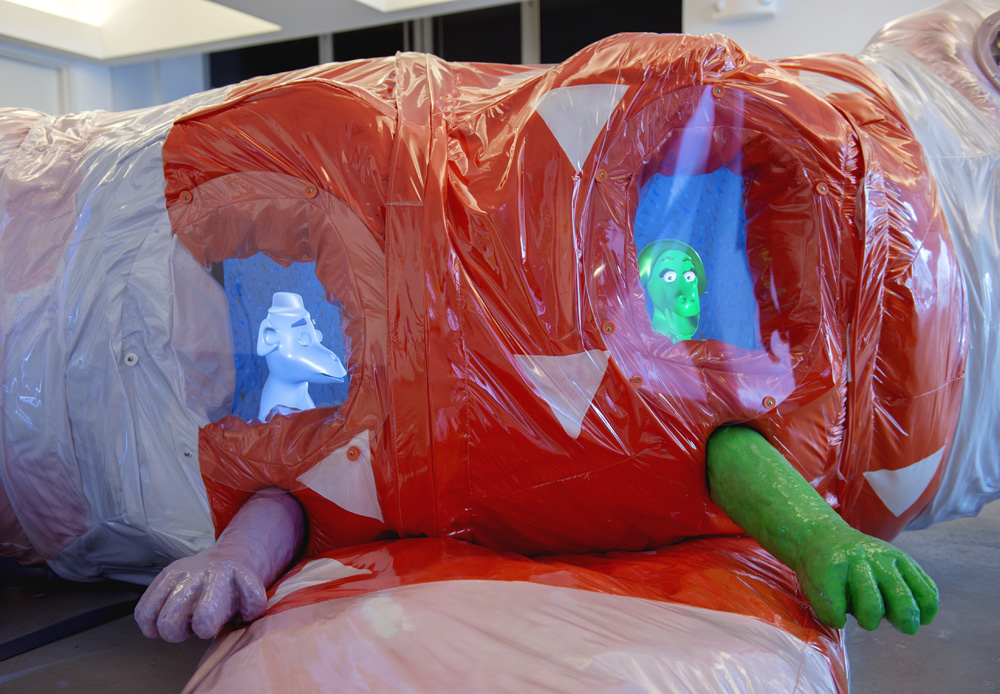
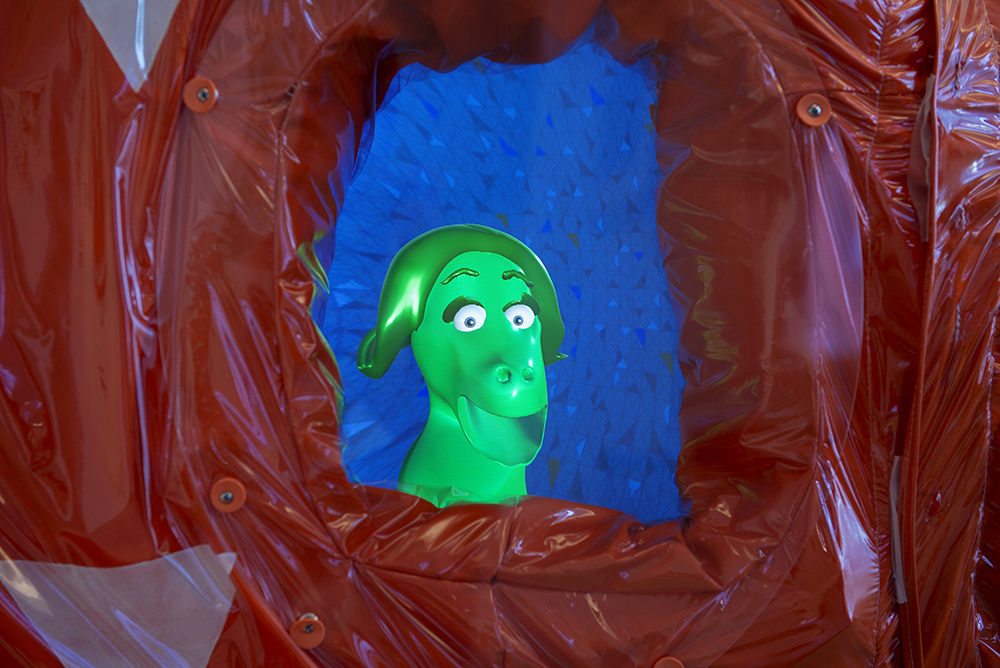
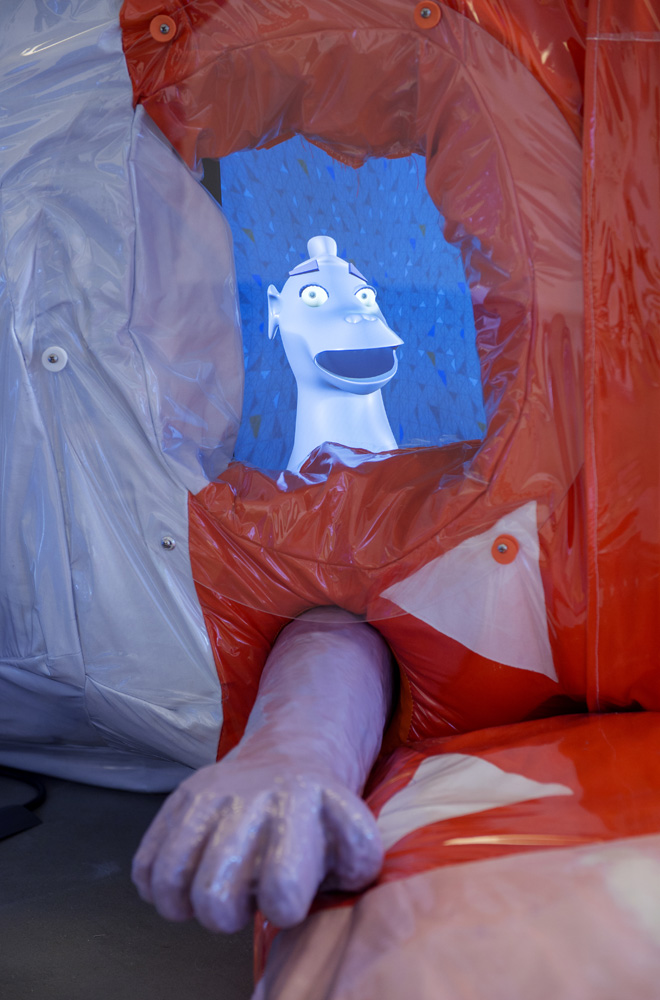
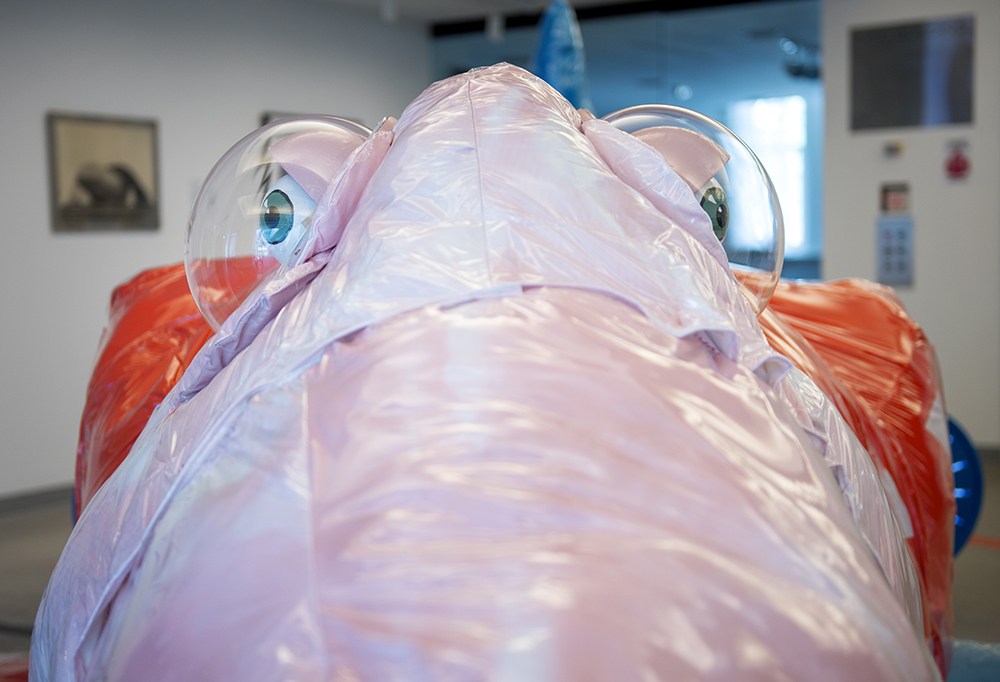
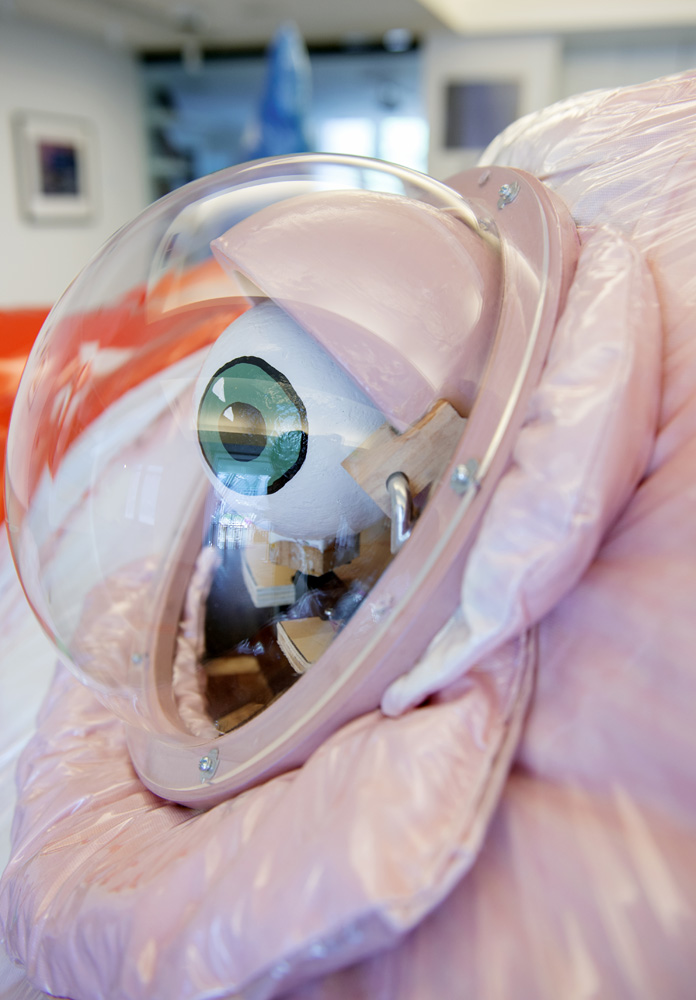
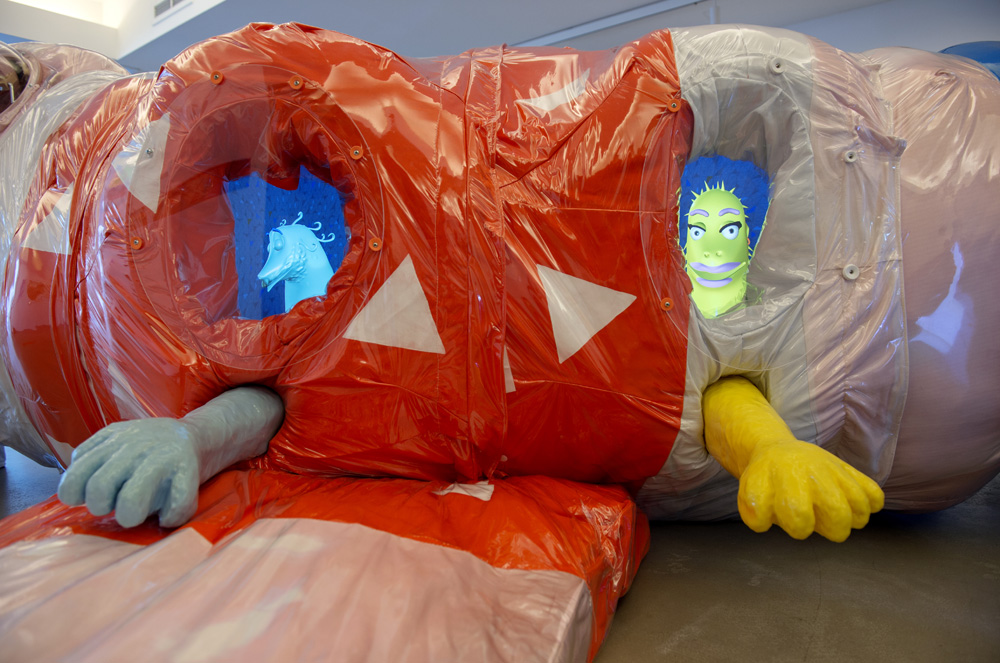
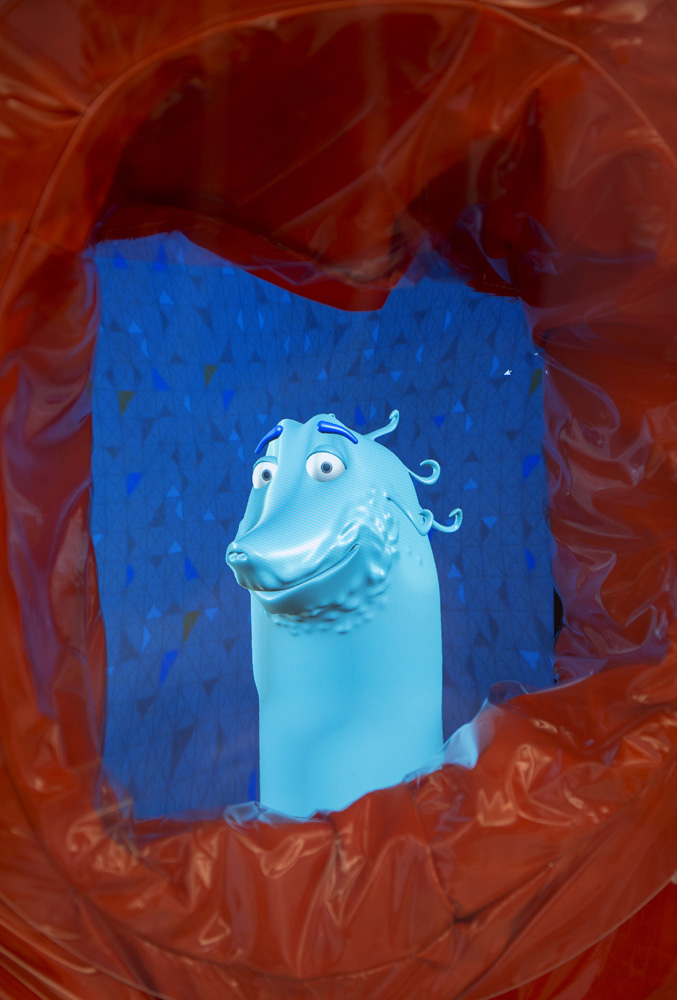
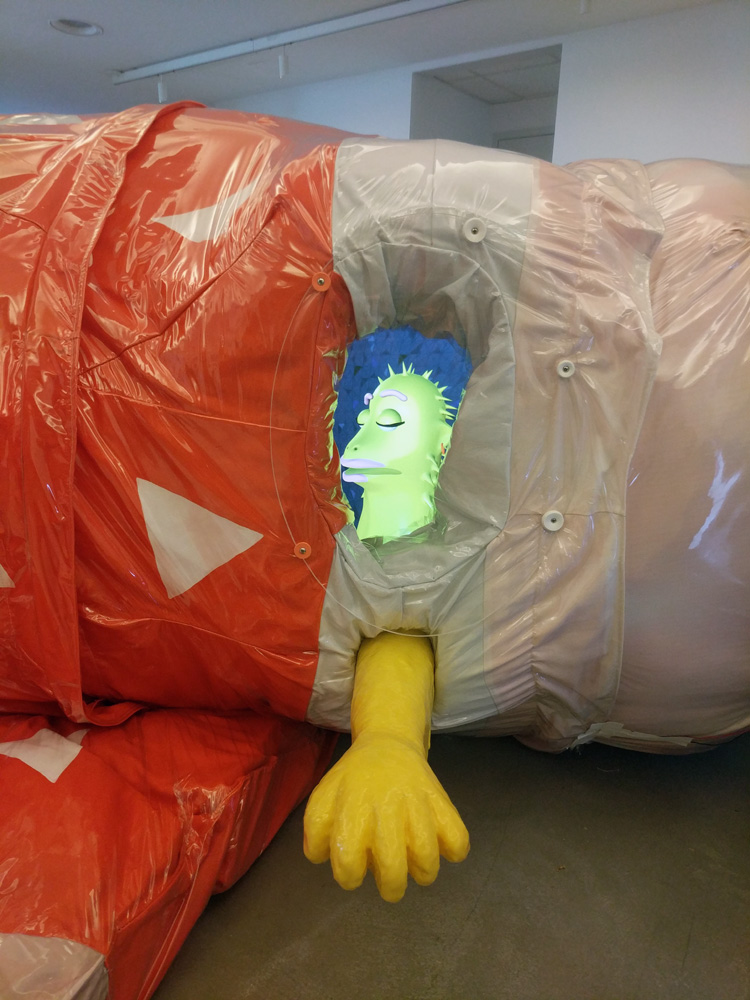
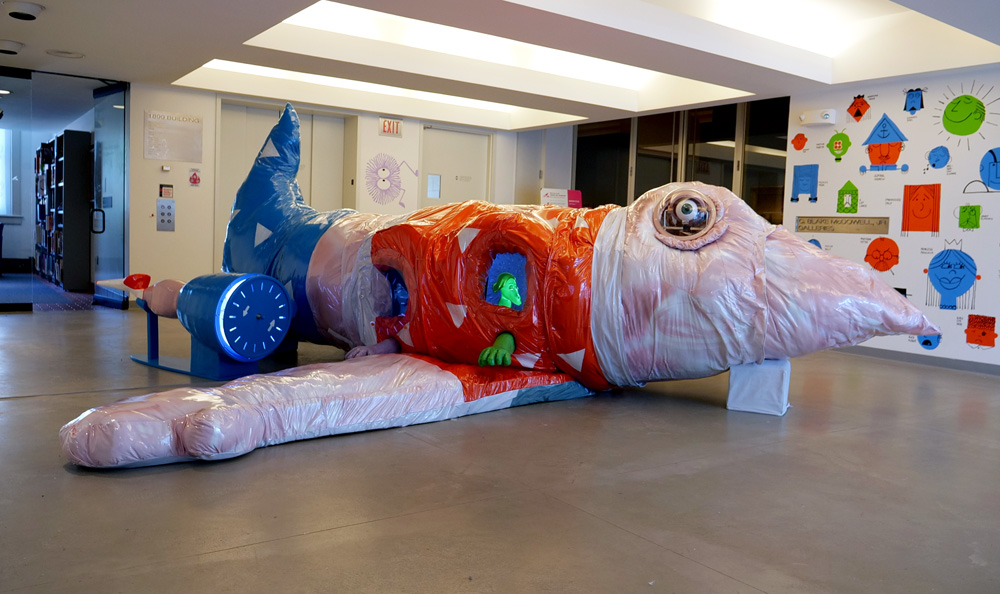
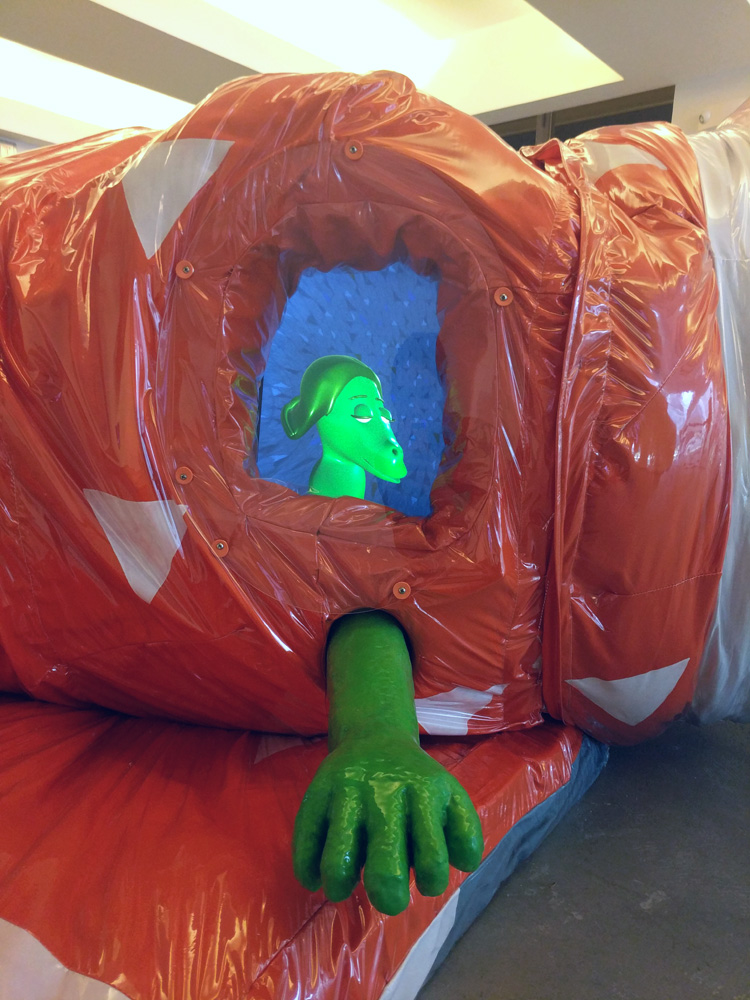
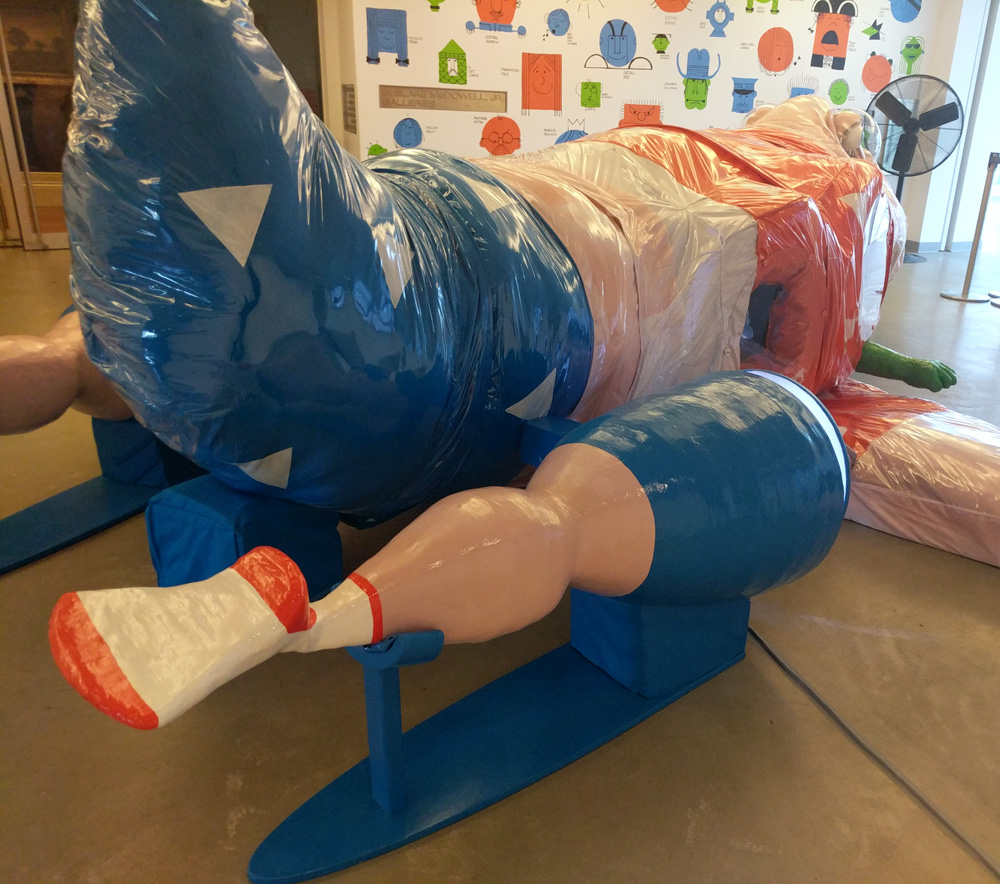
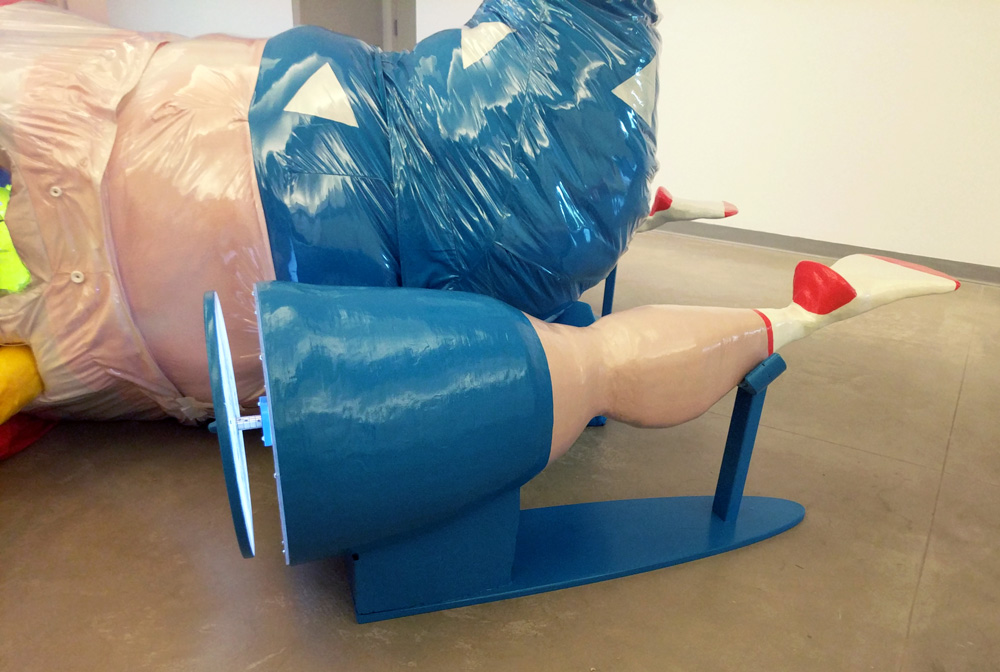
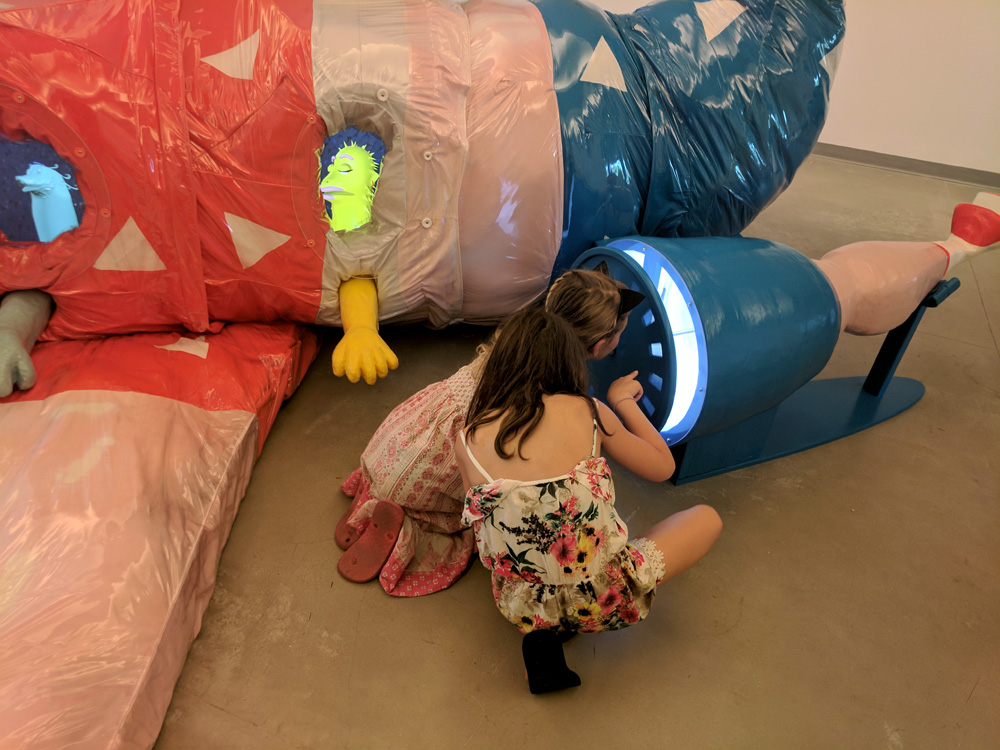
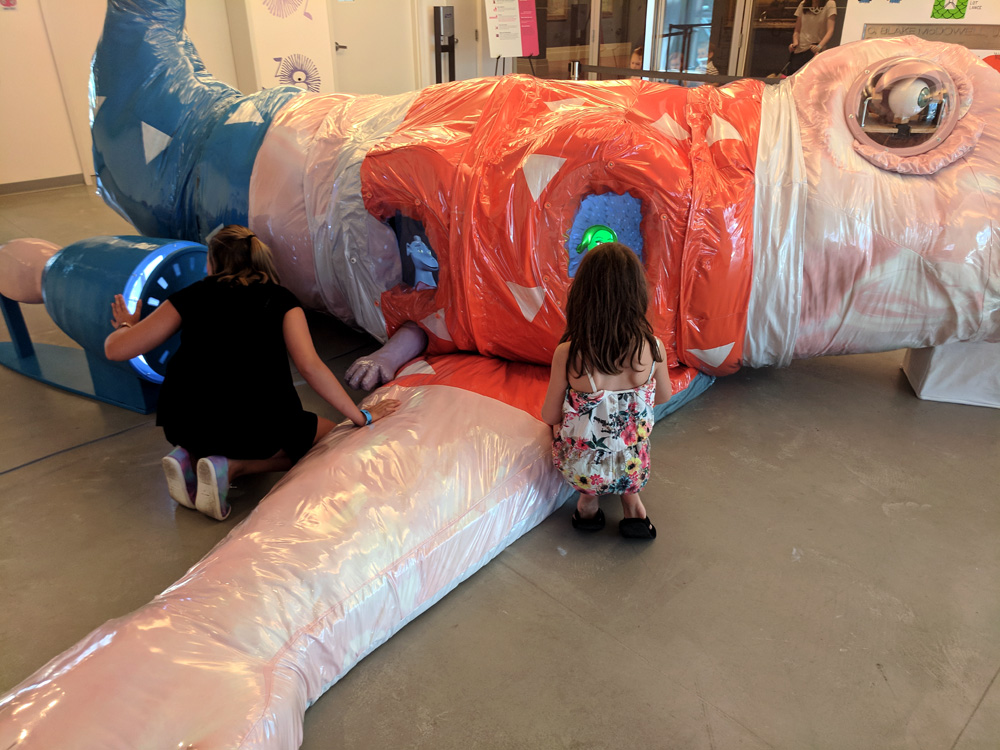
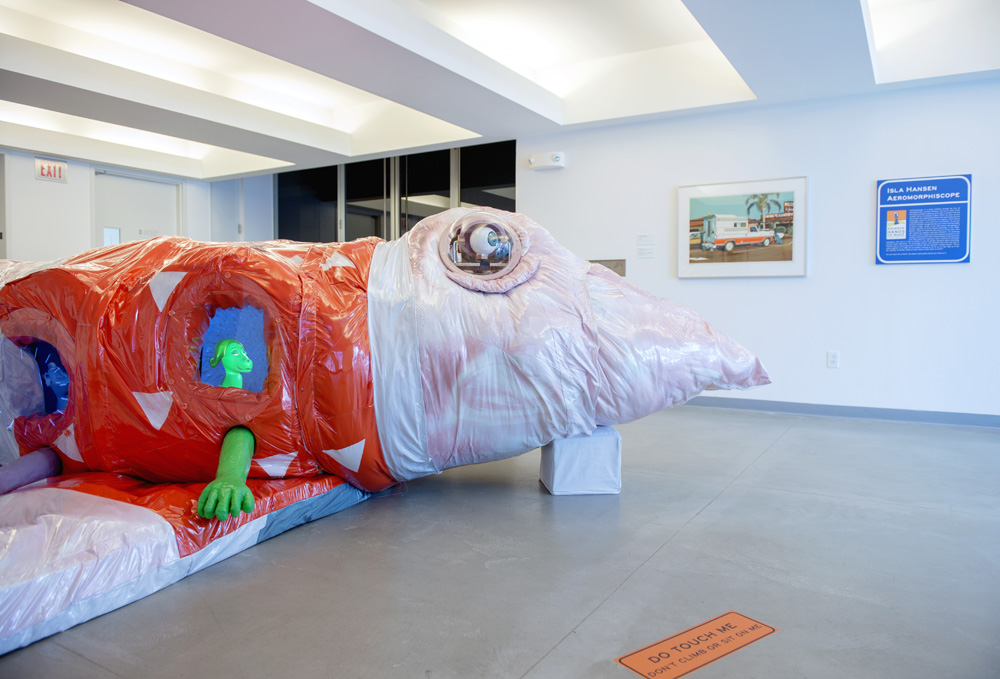



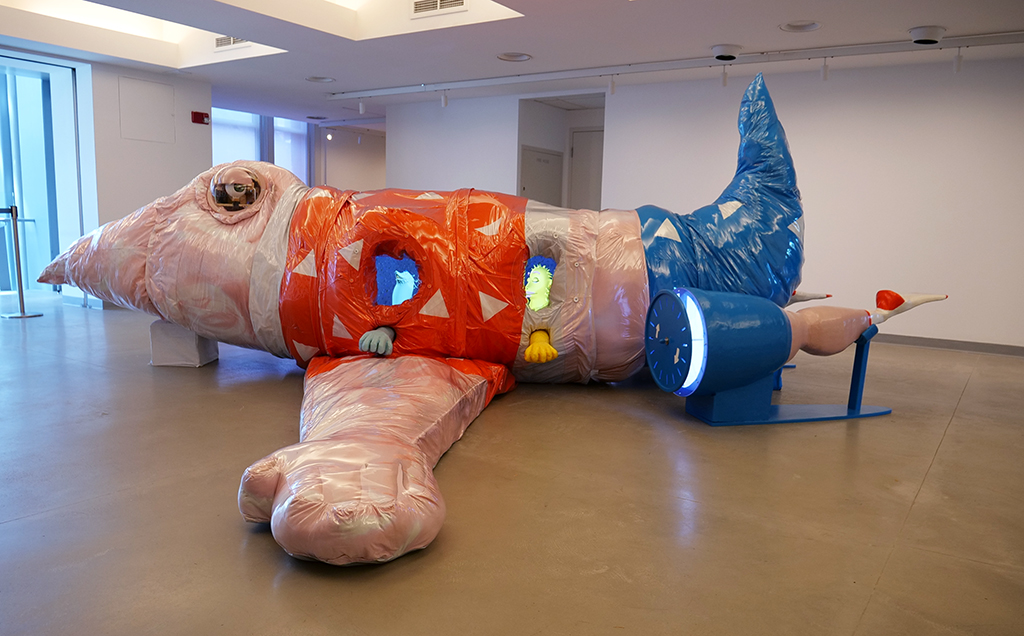
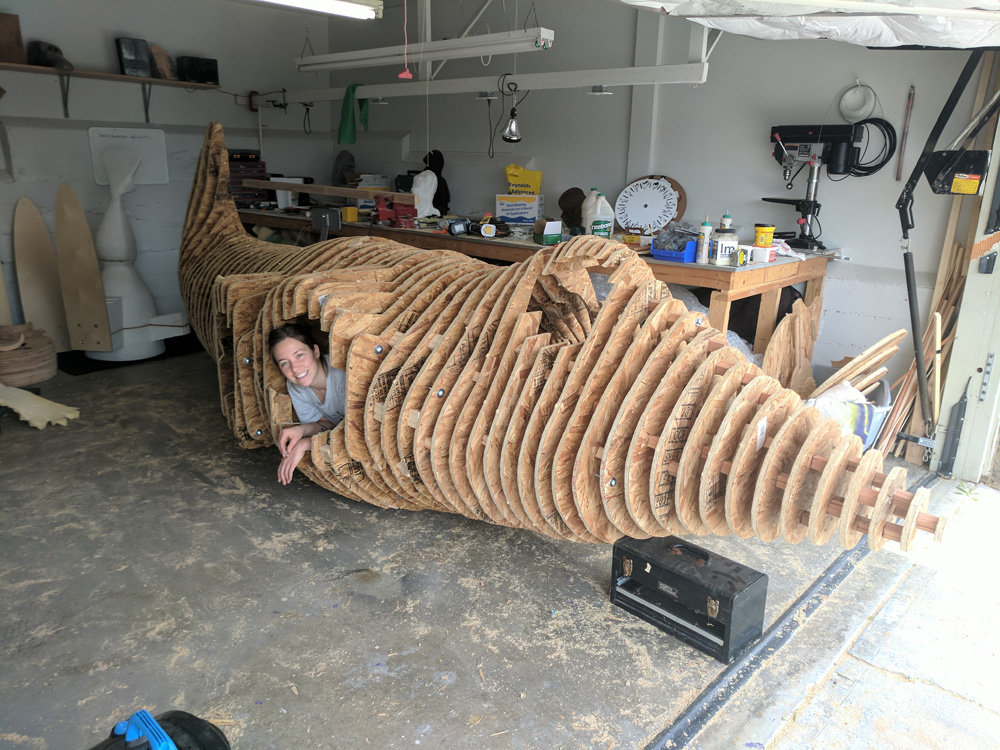
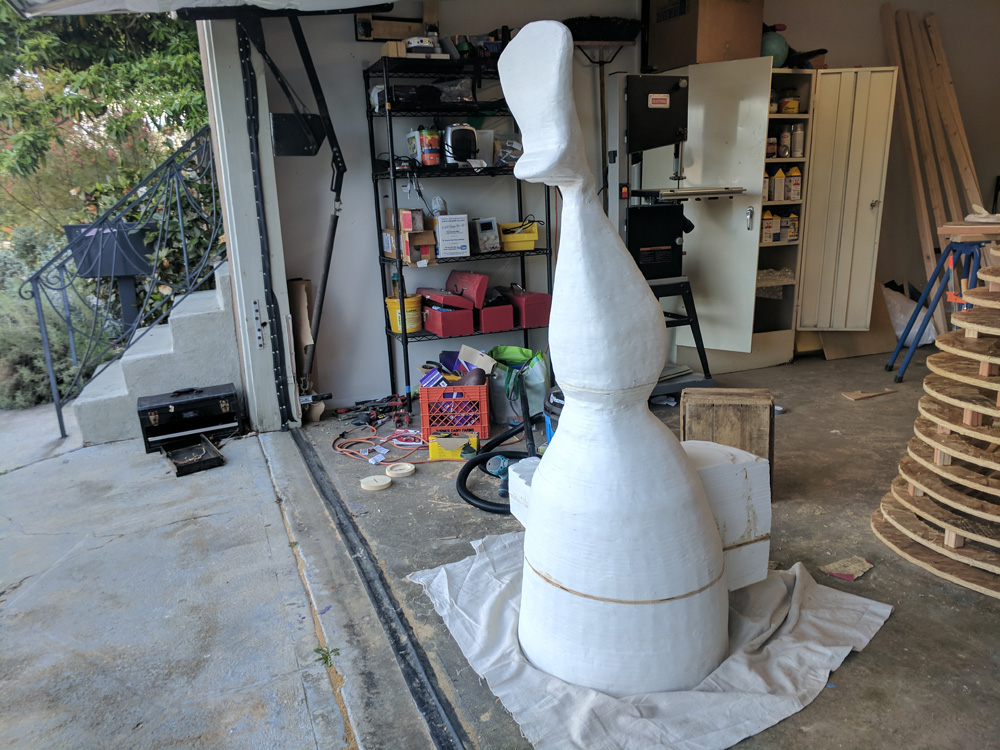
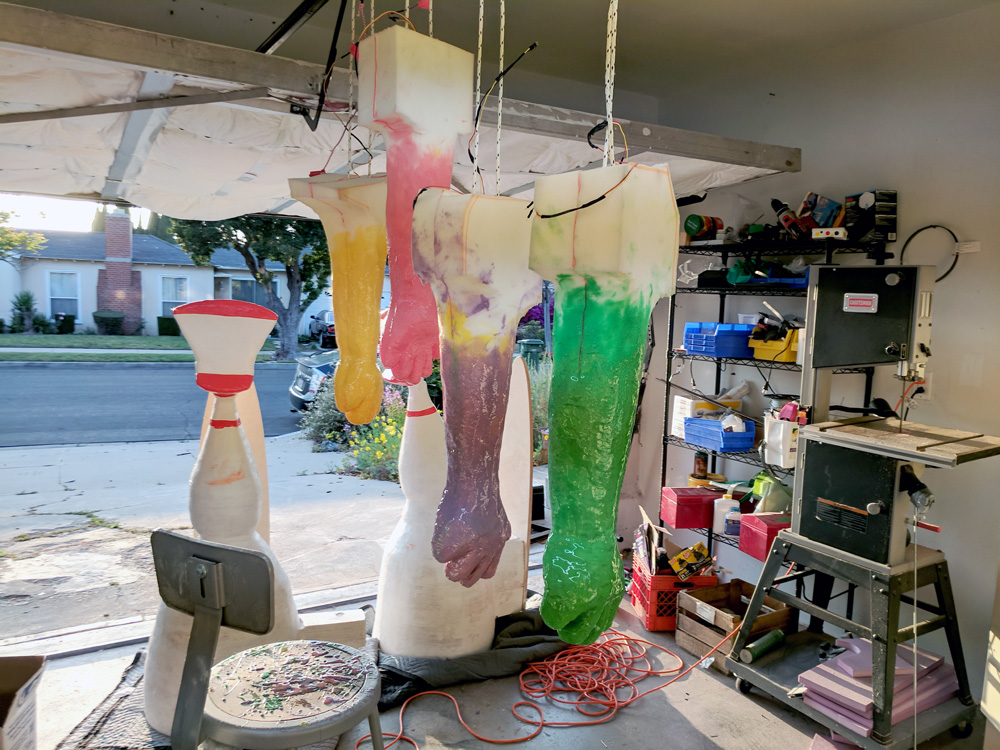
Aeromorphiscope is an interactive, robotic soft sculpture for all ages that takes the shape of an anthropomorphis airplane and features four interactive 3D animations, two phenakistiscopes, and animatronics. Inspired by aeromorphs, the plane is a playful and physical investigation of three moments in the history of the
illusion of life. It serves to remind us of the role our real
bodies and our machine bodies have played in visualizing,
distorting, morphing, and mimicking what is alive. The work
points towards current trends in industrial technological
design and prompts audiences of all ages to consider the relationship between bodies, motion, and technology.
Aeromorphiscope was commissioned by the Akron Art Museum in Akron, Ohio as part of their Planes, Trains, and Autombolies exhibition and was on display from July - November 2018.
Dimensions: 20 feet x 16 feet x 5 feet high
Media: Plywood, foam, cotton duck, vinyl, acrylic, LED monitors, PC, micro-controllers, interactive animation, custom imbedded sensors
More on Aeromorphiscope:
Aeromorphiscope is a plane plummeting through the sky, an anthropomorphic machine drifting in and out of sleep. The small handful of passengers on board are sleeping too, and birds are flying through the engines. Squeeze the hands of sleeping passengers to wake them up and watch them change form! Spin the turbine engines and peer inside to see birds in flight within!
This interactive soft sculpture prompts audiences of all ages to consider the relationship between bodies, motion, and technology by activating three forms of animation hidden in a plush aircraft.The first form of animation is visible in the plane’s two engines, taking the form of analog frame-by-frame images of bird flight, like those captured by Edward Muybridge in the 1890s. By using a technique associated with the zoetrope’s lesser known predecessor, the phenakistiscope, an illusion of motion will appear when visitors spin the disc and look through its slits. The second form of animation that brings the airplane to life is two animatronic blinking eyes where the plane’s cockpit would otherwise be. This is a form of physical animation made popular through the use of practical effects and
puppetry in the television and film industry prior to computer generated animation. Finally, the third form of interactive animation makes use of 3D graphics associated with contemporary animated cinema and games. Soft sensors in foam passenger arms sticking out of the plane can be pressed to morph the 3D animated characters in the windows, changing their shape and bringing them to life.
Aeromorphiscope is a playful and physical investigation of three moments in the history of the illusion of life. It serves to remind us of the role our real bodies and our machine bodies have played in visualizing, distorting, morphing, and mimicking what is alive. The work points towards current trends in industrial technological design, some of which began with the transportation device most dream like and most animal like — the airplane — arguably the first biomimetic mass transportation device, but probably not the last. As technology evolves, and machines have more and more in common with us, do we have more in common with the machine? Do we evolve together or at odds? Are we humans evolving at all? Or do we ride, high up in the sky, floating, levitating, asleep to what awaits us back down on earth?